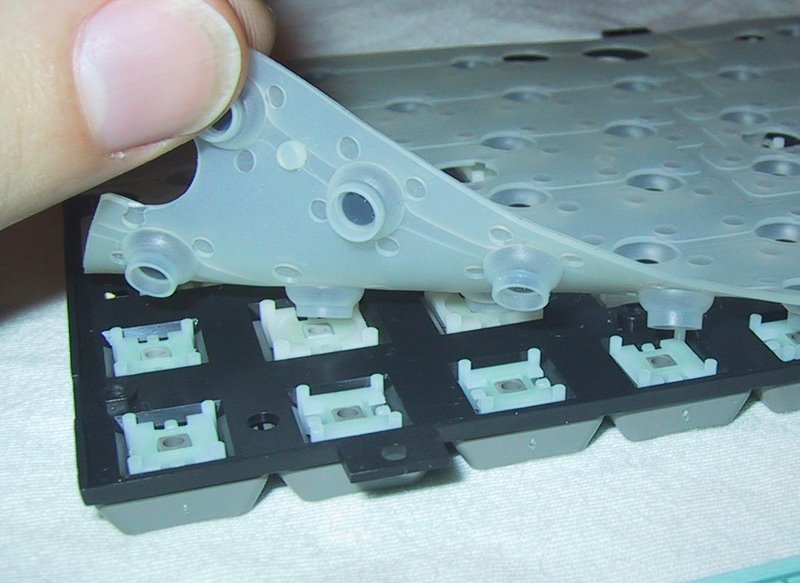Discover Various Types of Membrane Switch Technologies for Your Demands
Discover Various Types of Membrane Switch Technologies for Your Demands
Blog Article
Understanding the Performance of Membrane Switches Over for Interface Gadget
The performance of membrane layer switches represents a substantial innovation in individual interface design, integrating performance with aesthetic adaptability. As markets progressively prioritize individual experience, comprehending the subtleties of membrane button technology comes to be crucial.
What Are Membrane Layer Buttons?
Membrane layer switches are cutting-edge interface tools that facilitate customer communication with electronic devices. These flexible components contain multiple layers, consisting of a visuals overlay, spacer, and a published circuit layer. The design permits a seamless combination right into different electronic gadgets, improving both the aesthetic and practical elements of interface.
Membrane switches are typically used in a variety of applications, from house devices to commercial machinery and clinical devices. Their building normally features a slim profile, making them an excellent selection for portable layouts. The tactile comments offered by these switches can be engineered to fulfill specific individual choices, guaranteeing reliable interaction between the individual and the gadget.
Toughness is an additional considerable benefit of membrane switches, as they are resistant to dirt, wetness, and chemicals, which improves their life expectancy popular settings. Additionally, these buttons can be personalized in terms of shape, size, and visuals design, allowing for branding and user-specific attributes. Generally, membrane changes stand for a sensible solution for enhancing user experience in electronic devices, incorporating capability with visual appeal in an efficient fashion.
How Membrane Changes Work
Operating on a simple concept, membrane switches make use of a layered building to register user input properly. Each button contains several layers, consisting of a published circuit layer, a spacer layer, and a top visuals layer, which are designed to collaborate effortlessly. When an individual presses the top layer, it presses the spacer layer, bringing the conductive elements of the circuit layer into contact with each various other.
This call develops a shut circuit, signifying the gadget to implement a particular function. The style permits numerous configurations, including responsive responses, which can improve the customer experience by providing a physical feeling upon activation. The products used in membrane layer switches typically consist of flexible substratums, such as polyester or polycarbonate, which guarantee resilience and strength versus wear and tear.

Key Advantages of Membrane Switches

One more significant benefit is their density. Membrane buttons are thin and lightweight, which makes it possible for suppliers to conserve space in their tools without compromising functionality. This attribute is especially advantageous in applications where weight and quantity are important considerations.
In addition, membrane buttons are resistant to dust, dampness, and chemicals, improving their resilience. This strength prolongs their life-span and decreases the demand for regular replacements, resulting in expense financial savings over time.
Moreover, the tactile comments given by membrane layer switches can be maximized to boost user interaction. They can include attributes such as raised switches or distinct clicks, boosting usability and individual experience.
Applications Across Industries
User interface tools using membrane buttons are common in a wide selection of markets, showcasing their versatility and performance. Membrane Switch. In the medical market, membrane buttons are important to gadgets such as analysis equipment and patient surveillance systems, where their durability and simplicity of cleaning are essential for keeping health standards. In the automotive market, these switches are utilized in control panel controls internet and infomercial systems, providing a sleek and modern-day interface for users.
Moreover, the consumer electronic devices field take advantage of membrane switches in devices and handheld gadgets, where small design and user-friendly user interfaces enhance individual experience. Industrial applications also take advantage of membrane layer switches for control board in equipment and automation systems, emphasizing their robustness and resistance to harsh settings.
In the aerospace and defense industries, membrane layer switches are made use of in cabin controls and devices, where reliability and efficiency under severe problems are paramount. Additionally, the pc gaming market increasingly integrates membrane layer buttons in controllers and game makers, contributing to an engaging customer experience. Overall, the adaptability of membrane switches allows their prevalent use throughout various sectors, emphasizing their relevance in contemporary interface layout.
Future Patterns in Membrane Layer Switch Modern Technology

Additionally, the usage of sophisticated materials, such as polycarbonate and polyester films, is expected to rise, providing enhanced toughness and resistance to environmental stress factors. basics These products add to the total durability of membrane switches, making them ideal for harsher industrial applications.
In addition, the consolidation of clever modern technology, consisting of IoT connectivity, will certainly make it possible for membrane layer switches to connect with other gadgets and systems, assisting in an extra interactive user experience. This fad straightens with the growing demand for clever gadgets throughout various fields, from medical care to consumer electronics.
Lastly, personalization options are anticipated to expand, allowing makers to create bespoke services customized to details user demands and choices. These developments will certainly position membrane layer switches as vital parts in the development of interface modern technology.
Conclusion
In verdict, membrane switches over stand for a pivotal innovation in user interface technology, using a reputable and flexible solution for varied electronic applications. As developments in product scientific research and touch noticing innovations continue, the capability and applicability of membrane buttons are expected to broaden, enhancing their value see it here in modern electronic gadgets.
Report this page